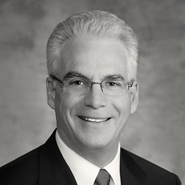The Section 101 Natural Law Exception - American Axle & Manufacturing, Inc., v. Neapco Holdings LLC
June 28, 2021 – Articles
Key Takeaways
The Supreme Court is currently weighing whether to take a case regarding Section 101 of the Patent Act as it applies to inventions involving natural laws. The Federal Circuit recently invalidated claims belonging to American Axle & Manufacturing Inc. relating to the manufacture of a prop-shaft using a natural law under Section 101.
Practitioners are wise to avoid potential fallout from the decision by clearly drafting claims that incorporate natural laws by (1) specifically detailing how the natural law is inventively applied in the claim, (2) claiming structures and results with a level of completeness and specificity that moves beyond abstract generalizations, and (3) claiming with detail the unique relationship multiple ideas or natural laws have in the claims.
Introduction
In American Axle & Manufacturing, Inc., v. Neapco Holdings LLC, the Supreme Court will soon decide whether to take a case to further clarify interpretation of Section 101 of the Patent Act regarding the natural law exception to patent eligibility. In early May, the Court asked the solicitor general of the United States to file a brief expressing the views of the United States (Call for the Views of the Solicitor General or CVSG). Such a request often indicates that the Court is inclined to take the case. The Court’s decision to take the case and any decision on the merits will likely affect how courts interpret Section 101, and therefore how patent applicants should draft claims.[1]
Summary of Case Posture before Solicitor General Filing
In 2015, American Axle and Manufacturing (AAM) sued Neapco for infringement of a patent relating to a method for attenuating driveline vibrations. Chief Judge Stark of the District of Delaware, on summary judgment, found the asserted claims of U.S. Patent 7,774,911 ineligible for patent protection under Section 101 of the Patent Act.[2] The district court reached this decision by applying a two-step analysis.[3] Assuming the claims are to a “process, machine, manufacture or composition of matter,” a court determines first whether the claims as a whole are “directed to” one of the three categories of exceptions to patentable subject matter: abstract ideas, laws of nature, or natural phenomena.
One way to determine if the claim is “directed to” one of the exceptions is to consider whether the claim transforms the exception into a practical application of the exception. However, in Mayo, the Supreme Court made clear that “to transform an unpatentable law of nature into a patent-eligible application of such a law, one must do more than simply state the law of nature while adding the words ‘apply it.’”[4] Furthermore, the United States Patent and Trademark Office, in the Manual of Patent Examining Procedure (MPEP), says that “[a]n improvement in the functioning of a computer, or an improvement to other technology or technical field” may indicate that the claim has adequately taught how to practically apply the exception.[5] All of this can inform the “directed to” inquiry in the first step.
After determining whether the claim is “directed to” an exception, the court then determines whether the claim contains “significantly more than a patent upon the ineligible concept itself” to transform the invention into patentable subject matter.
In the first step of the analysis, the district court found that independent claims 1 and 22 are directed to natural laws, as those claims recited “the mere application of Hooke’s Law” and friction damping.[6] Hooke’s Law, stated simply, declares that the force needed to extend or compress a spring by some distance is scaled linearly with respect to that distance.
As to the second step of the analysis, the court found the claims cite nothing more than Hooke’s Law and friction damping and that any “additional steps consist of well-understood, routine, conventional activity already engaged in by the scientific community . . . and those steps, when viewed as a whole, add nothing significant beyond the sum of their parts taken separately.”[7]
On appeal, a split panel of the Federal Circuit affirmed the district court, finding that the claims were directed to Hooke’s law and that there was no “inventive concept” other than “well-understood, routine, [and] conventional activities previously known to the industry.”[8] After AAM’s appeal for panel rehearing and rehearing en banc, the panel reissued its opinion and affirmed the district court, but withdrew its reasoning as to Claim 1, sending claim 1 back to the district court.[9] Finally, the full Federal Circuit denied the petition to rehear en banc by splitting 6-6.[10]
The claim at issue, Claim 22, reads as follows:
A method for manufacturing a shaft assembly of a driveline system, the driveline system further including a first driveline component and a second driveline component, the shaft assembly being adapted to transmit torque between the first driveline component and the second driveline component, the method comprising: providing a hollow shaft member; tuning a mass and a stiffness of at least one liner; and inserting the at least one liner into the shaft member; wherein the at least one liner is a tuned resistive absorber for attenuating shell mode vibrations and wherein the at least one liner is a tuned reactive absorber for attenuating bending mode vibrations.
In its opinion issued after rehearing, the court found that this claim “simply requires the application of Hooke’s law to tune a propshaft liner to dampen certain vibrations.”[11] The panel argued that like the claims in Parker v. Flook, 437 U.S. 584 (1978), “Claim 22 here simply instructs the reader to tune the liner to achieve a claimed result, without limitation to particular ways to do so.”[12] In Flook, claims relating to updating alarm limits using a mathematical formula were invalidated under Section 101 because they did not contain an “inventive application” of the mathematical formula. In this case, the panel found that the claim in question “does not specify how” to apply the natural law, instead it “simply instructs the reader . . . to achieve a claimed result[.]”[13]
The panel’s reissued opinion also relied heavily on O’Reilly v. Morse, 56 U.S. 62, 112 (1853), and the similarly broad claim language of claim 22.[14] Recall that the claim at issue in O’Reilly claimed using electromagnetism (an unpatentable natural law) at a distance.
Judge Moore dissented in both panel decisions, arguing in the first panel decision that the claims did not claim a natural law and in both decisions that the majority had confused Section 101 with Section 112’s written description and enablement requirements.[15] In addition, Judge Moore rejected the comparisons to the prior case law on abstract ideas and natural laws: “One important difference between this natural law case and every other one ever decided is that these claims do not actually recite any particular natural law and likely implicate many (as all mechanical inventions must comply with the laws of physics).”[16]
The petitioners argue that the Federal Circuit improperly applied step 1 of Alice, and that a claim is “directed to” a law of nature only if it “implicates the concern that justified grafting that judge-made, atextual framework onto the Patent Act in the first place: the ‘concern that patent law not inhibit further discovery by improperly tying up the future use of laws of nature.’”[17] The opposition argues that this case is “about a small set of poorly drafted, overbroad claims designed to monopolize a fundamental building block in the engineer’s toolkit.”[18]
Conclusion
Jurisprudence around Section 101 of the Patent Act continues to be lively as Congress does not seem poised to take up 101 reform legislation any time soon. Patent practitioners are wise to take note of these arguments and draft claims accordingly.
First, patent owners should avoid claiming in a manner that invites rejection due to simply claiming a law of nature. This can be done by ensuring that any laws of nature potentially in the claims are adequately transformed into an application of the law by further detailing how the law is applied in the claim. As the MPEP notes, indicators that the claims have been integrated into a practical application of the judicial exception and therefore are patent-eligible include, among others: “An improvement in the functioning of a computer, or an improvement to other technology or technical field,” and “[e]ffecting a transformation or reduction of a particular article to a different state or thing.” [19]
Second, patent owners should avoid claiming inventions as “functional results.” Practitioners should claim structures and results with a level of completeness and specificity that moves beyond abstract generalizations.
Third, if a single claim contains two abstract ideas or natural laws and if they are related in a logical way, then, courts may find them to be ineligible for patent protection. To avoid this, a patent applicant should draft claims to uniquely relate the various ideas in the claims. As the MPEP notes, “However, if possible, the examiner should consider the limitations together as a single abstract idea for Step 2A Prong Two and Step 2B (if necessary) rather than as a plurality of separate abstract ideas to be analyzed individually.” [20]
[1] In general, guidance relating to laws of nature and patent eligible subject matter can be found in the Manual of Patent Examining Procedure (MPEP) at MPEP 2106.04(b).
[2] American Axle & Manufacturing, Inc. v. Neapco Holdings LLC et. al., Case No.1:15-cv-01168-LPS (D. Del.).
[3] As established in Mayo Collaborative Services v. Prometheus Laboratories, Inc., 566 U.S. 66, 132 S. Ct. 1289, 182 L.Ed. 2d 321 (2012), and Alice Corp. Pty. Ltd. v. CLS Bank International, 573 U.S. 208, 134 S. Ct. 2347, 189 L. Ed.2d 296 (2014).
[4] Mayo at 72.
[5] MPEP 2106.04(d)
[6] Id. at 10.
[7] Id. at 15. (quoting Mayo at 79-80).
[8] American Axle & Manufacturing, Inc. v. Neapco Holdings LLC et. al., Case No. 18-1763 (Fed. Cir. Oct. 3, 2019); Alice, 573 U.S. at 225.
[9] American Axle & Manufacturing, Inc. v. Neapco Holdings LLC et. al., Case No. 18-1763 (Fed. Cir. Panel Rehearing July 31, 2020).
[10] American Axle & Manufacturing, Inc. v. Neapco Holdings LLC et. al., Case No. 18-1763 (Fed. Cir. en banc denial July 31, 2020).
[11] American Axle, Panel Rehearing at 9.
[12] Id. at 21.
[13] Id. at 20-21.
[14] Id. at 18.
[15] Id. at 34.
[16] Id. at 39.
[17] American Axle & Manufacturing, Inc. v. Neapco Holdings LLC et. al., Petitioner Reply Brief at 1 (April 12, 2021).
[18] American Axle & Manufacturing, Inc. v. Neapco Holdings LLC et. al., Brief in Opposition at 2 (March 31, 2021).
[19] MPEP 2106.04(d).
[20] MPEP 2604 II (B).

